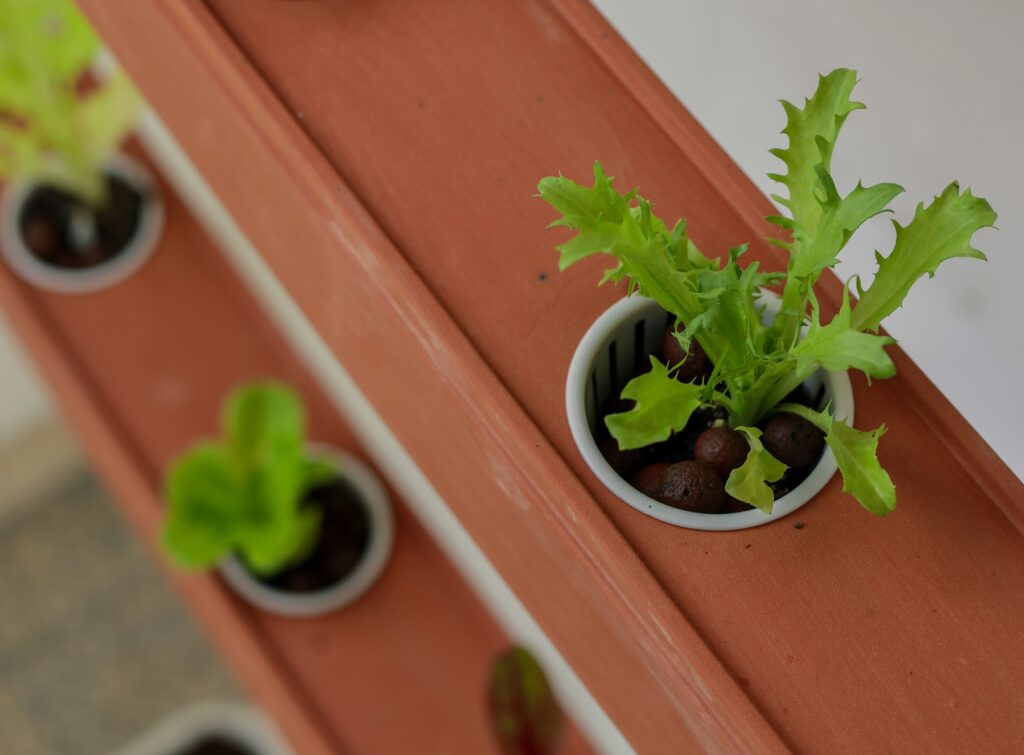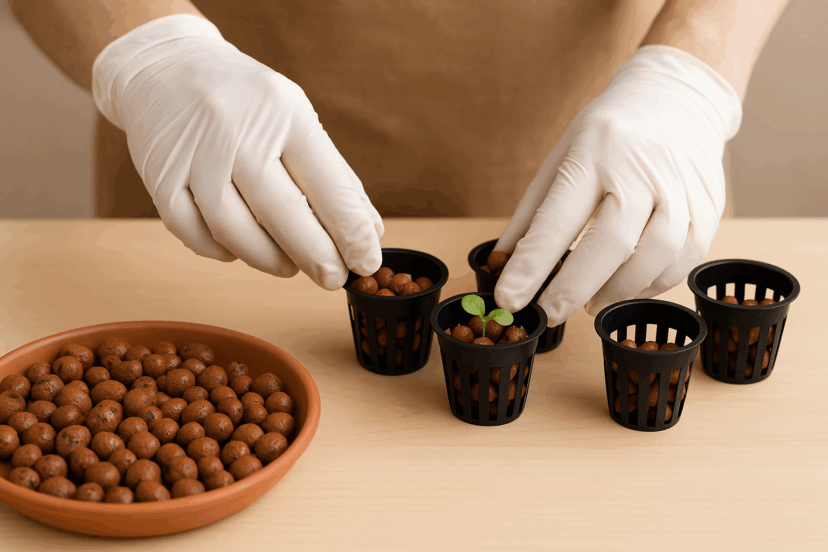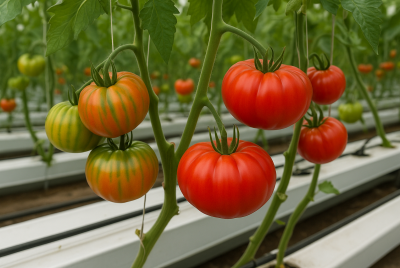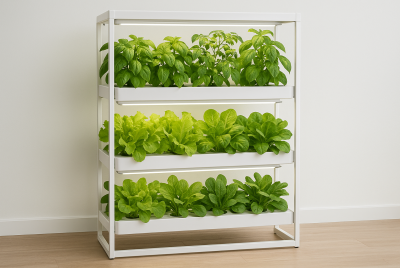Hydroponic Clay Pebbles: Ultimate Grower’s Guide
We may earn a commission for purchases made using our links. Please see our disclosure for more details.
Sustainable gardening should make life simpler, but traditional soil setups often get messy, waste water, and invite pests that hold your plants back. This can leave you frustrated, spending more time fixing problems than actually enjoying your garden. Luckily, hydroponic clay pebbles offer an easy solution — they’re lightweight, reusable, and create the perfect balance of air and moisture so your plants thrive with less effort. In this guide, you’ll see why they’re a smart choice, how to use them properly, and where to find the best options online.
What Exactly Are Hydroponic Clay Pebbles?
Hydroponic clay pebbles — often called LECA (Lightweight Expanded Clay Aggregate) or Hydroton — are small, round balls formed by baking clay at high temperatures. They’re produced by superheating natural clay until it expands like popcorn, creating a porous, lightweight structure. What was the result? A hard but porous stone that does not break down readily and may be reused repeatedly.
Each clay pebble is full of small air spaces. This unusual construction provides excellent drainage and ensures that your plants’ roots receive plenty of oxygen, both of which are vital for healthy growth. While clay pebbles are most typically used in hydroponics, they are also used in aquaponics, semi-hydroponics for houseplants, and as a soil additive to aid drainage.

Top Benefits of Using Clay Pebbles for Hydroponics
So, why are clay pebbles so popular with hydroponic gardeners? Let’s look at the major perks:
Excellent Aeration: Roots thrive when they have access to oxygen. Clay pebbles’ porous design promotes healthy airflow around the roots.
Superior Drainage: Overwatering is one of the biggest killers in hydroponics. Clay pebbles drain excess water quickly, helping prevent root rot.
Reusable & Sustainable: A bag of clay pebbles can last you years. Simply clean and sterilize them between uses.
table pH: Good-quality clay pebbles are pH neutral, so they won’t throw your nutrient solution out of whack.
Versatile Uses: They work great in ebb and flow systems, deep water culture, drip systems, and even as a top layer for potted houseplants to reduce fungus gnats.
When you combine these benefits, it’s easy to see why hydroponic clay pebbles are a staple for both hobbyists and commercial growers alike.
How to Use Hydroponic Clay Pebbles Step-by-Step
Using clay pebbles isn’t complicated, but a few tricks can make all the difference. Here’s a simple step-by-step guide:
1. Rinse Thoroughly
This is a must! Fresh clay pebbles often have clay dust that can clog pumps or coat roots. Give them a good rinse under fresh water until there’s no more cloudy residue.
2. Pre-Soak in pH-Balanced Water
Soaking your pebbles for a few hours (or overnight) in a mild nutrient solution or pH-neutral water helps stabilize them. This step reduces any pH swings in your system when you first add them. This works well even in tight spaces — see this apartment hydroponic garden guide for ideas.
3. Add to Net Pots or Grow Beds
Gently fill your net pots or grow beds with the pebbles. For seedlings or cuttings, you can nestle the roots gently within the pebbles to hold them in place.
4. Monitor and Maintain
Keep an eye on moisture levels. While clay pebbles are great at retaining moisture, they don’t hold it indefinitely. Depending on your system (NFT, DWC, drip), you’ll need to adjust your watering cycles accordingly. For extra setup tips, check out this hydroponic garden layout guide to plan your system efficiently.
5. Clean Between Uses
After each harvest, clean your pebbles thoroughly to prevent salt or algae buildup. This extends their lifespan and keeps plants healthy.
Best Hydroponic Clay Pebbles to Consider
Choosing the right brand is important since not all clay pebbles are created equal. Here are a few top-rated options you can grab online:
Mother Earth Hydroton Original Clay Pebbles
These are some of the most trusted pebbles for consistent size and quality.
Hydrofarm GROW!T Clay Pebbles
Budget-friendly and reliable, these pebbles offer great aeration and drainage.
Organic Expanded Clay Pebbles
Perfect for organic gardeners who want a chemical-free option.
Halatool Expanded Clay Pebbles
A well-known pick for small to medium grow systems — uniform size, easy to rinse, and a favorite for herbs and veggies.
Legigo Hydroponic Clay Pebbles
These pebbles come pre-washed, saving you time. They’re great for both hydro and semi-hydro setups, plus they’re reusable and lightweight.
💡 Tip: Before buying, always read product reviews to ensure they match your system’s size and your plants’ needs.
Common Problems and Mistakes to Watch For
Even the best gardeners make mistakes—especially when they’re new to hydroponics. Here are a few to keep on your radar:
Skipping the Rinse: If you don’t wash away the clay dust, it can cloud your reservoir and affect your pumps.
Not Monitoring pH: While clay pebbles are mostly neutral, slight residue can cause minor fluctuations. Keep an eye on your solution.
Algae Buildup: Pebbles exposed to light can develop algae. A simple fix? Cover exposed pebbles with an opaque layer or use net pot lids.
Overwatering: Yes, clay pebbles drain well, but if your system floods for too long, roots can still drown.
Avoiding these slip-ups will keep your plants healthy and your system running smoothly.

Tips to Keep Clay Pebbles Clean and Long-Lasting
One thing growers love about clay pebbles is how reusable they are. Here’s how to keep them in great shape:
Deep Clean After Each Use: Soak pebbles in a mild bleach or hydrogen peroxide solution for 24 hours. Rinse thoroughly afterward.
Use a Mesh Bag for Rinsing: It makes handling large batches so much easier.
Dry Completely: Let pebbles dry out fully before storing to prevent mold or bacteria.
When cared for properly, clay pebbles can last for years—saving you money and reducing waste.
Extra Ways to Use Clay Pebbles in Your Garden
Did you know hydroponic clay pebbles aren’t just for hydroponics? They’re surprisingly versatile:
Houseplants: Use as a top dressing to prevent pests like fungus gnats.
Soil Amendment: Mix into heavy soils to improve drainage and root health.
Aquaponics: They’re perfect for supporting plants in systems that combine fish and plants.
Semi-Hydro for Orchids: Many orchid enthusiasts love clay pebbles for their balance of moisture and airflow.
If you have leftover pebbles, get creative—your entire garden can benefit!
Helpful Research and Resources
If you’d like to dig deeper into the science behind clay pebbles, check out this recent study on formaldehyde removal using expanded clay pellets, which highlights how hydroponic systems with clay pebbles can help clean indoor air while supporting plant growth.
For a practical perspective, this comprehensive guide on the pros and cons of Hydroton in hydroponics breaks down real-world benefits like reusability and aeration, plus tips for avoiding common pitfalls. Both resources offer valuable insights if you’re ready to get the most out of your hydroponic clay pebbles.
Final Thoughts
Whether you’re a newbie or a seasoned green thumb, hydroponic clay pebbles offer a simple, effective way to grow stronger, healthier plants. They’re easy to use, reusable, and help create the perfect root environment.
Want to watch your plants flourish with less hassle? Give hydroponic clay pebbles a try and watch your garden thrive!
FAQs
Are hydroponic clay pebbles reusable?
Yes! As long as you clean and sterilize them properly, clay pebbles can be reused many times.
How do you clean clay pebbles?
Rinse to remove debris, then soak in a mild hydrogen peroxide or bleach solution to kill pathogens. Rinse again and dry.
Do clay pebbles affect pH?
Good-quality pebbles are pH neutral, but it’s smart to monitor your system for any swings.
Can I use clay pebbles in soil gardening?
Absolutely! Mixing them into soil can improve aeration and drainage.
How often can you clean and reuse clay pebbles before replacing them?
If they’re cleaned properly and don’t break down, they can last for years.




